June 2023 | energydigital.com


Technology
How do we ensure increased sustainability solutions along the battery value chain?
Largest solar power parks

June 2023 | energydigital.com


Technology
How do we ensure increased sustainability solutions along the battery value chain?
Largest solar power parks
To address challenges faced by the power grid, industry leaders Siemens, Albireo Energy, and ABB are increasing the use of smart and microgrid capabilities




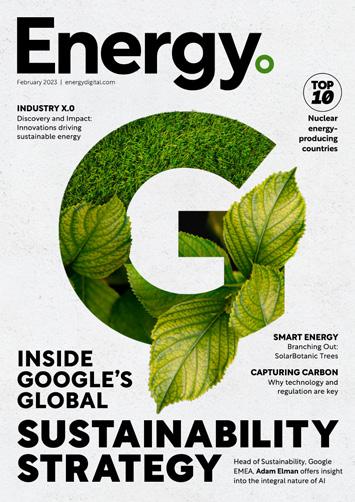











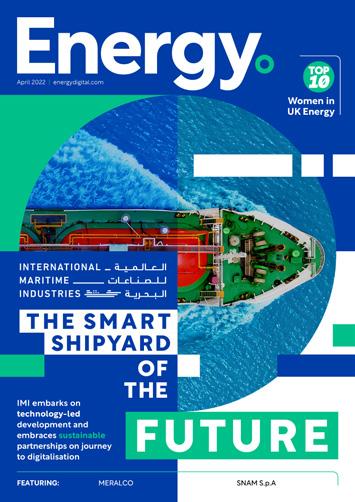





































Energy magazine is an established and trusted voice with an engaged and highly targeted audience of 150,000 global executives


Digital Magazine


Website
Newsletters
Industry Data & Demand Generation

Webinars: Creation & Promotion
White Papers & Research Reports
Lists: Top 10s & Top 100s
Events: Virtual & In-Person
WORK WITH US




Welcome to the June issue of Energy Digital, where we look at all things digitalisation - from AI to digital transformation and the deployment of smart grid technologies.
Fast-moving developments within the energy sphere mean companies looking to stay ahead of the curve must digitalise.

Over the coming decades, digital technologies will make energy systems more connected, intelligent, efficient, reliable and sustainable as the technological transition from analogue to digital advances. Information and communication technologies (ICT), modern sensors, big data and artificial intelligence are some of the technologies that can help us find ways to decarbonise our energy systems and improve how we use energy.
This is exactly what we delve deeper into within the June issue of Energy, hearing from industry leaders on issues pertaining to digital transformation, smart grids, IoT, AI and machine learning, as well as the future of energy storage and batteries.
Perhaps summed up best by Thermo Fisher Scientific’s Tareq W. Alnajjar, who explained to me this month that digital transformation in the energy sector is no longer an innovative vision but a strategic imperative.

MARIAM AHMAD editorial@bizclik.com
“Fast-moving developments within the energy sphere mean companies looking to stay ahead of the curve must digitalise”


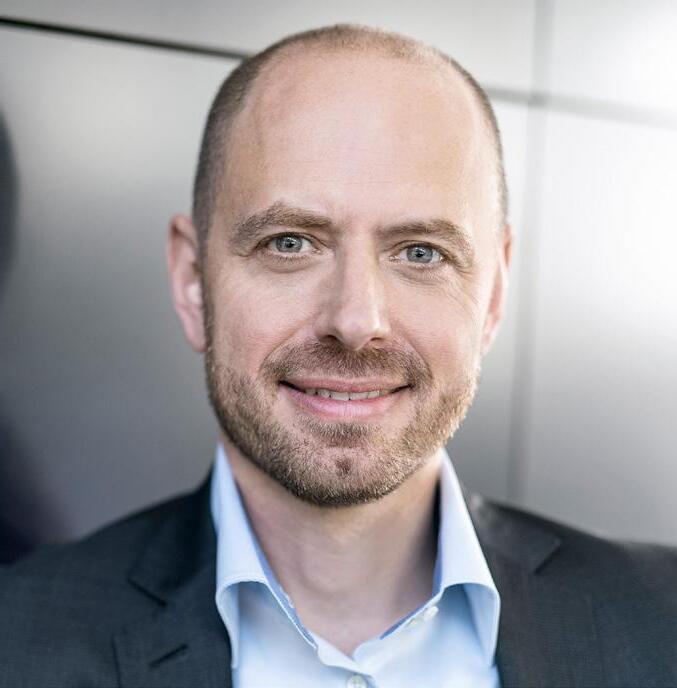






86 TECHNOLOGY


sustainable future for batteries



Tuomo Hoysniemi, Division President, Drive Products at ABB, explains how investing in energy efficiency today maximizes savings over the long term – and achieves shorter payback periods than ever.



The cost of energy is a significant concern for businesses – it affects their sustainability, profitability and growth strategies. Data on 2,300 business leaders from the ABB Energy Insights Report shows that three in five businesses reported that high energy costs might delay their progress toward sustainability targets.
At the same time, the report shows that the rising price of energy is cutting into profit margins and forcing businesses to reallocate funds away from areas that are key to growth, such as R&D, technology, infrastructure and marketing.
Fortunately, there are solutions available that can curtail the effects of rising energy costs. By investing in energy-efficient
equipment, businesses can achieve the same outcomes using considerably less electricity. Since electricity is the top operating expense (OpEx) for many businesses, efficiency enables significant savings.
The International Energy Agency (IEA) considers energy efficiency essential to achieving Net Zero. It describes efficiency as “the first fuel – the one you do not have to use, yet it gives you the services you need.” The IEA has called on industry to invest in efficiency for both new and existing installations.
Improving the efficiency of electric motors must be a priority. They are essential to almost every sector, yet many are very
Tuomo Hoysniemi, President, Drive Products, ABBinefficient. Collectively, industrial electric motors use approximately 45 percent of all energy produced, being primarily used in fans and pumps. By replacing older electric motors with more efficient modern systems, we could reduce total global energy consumption by up to 10 percent.
One effective way to improve a fan or pump motor’s efficiency is to pair motors with a variable speed drive (VSD). A VSD adjusts a motor’s speed to exactly match the requirements of the task. Any time it is not operating at full speed, it is saving power. Slowing a motor can produce significant savings – reducing a motor’s speed by just 20 percent reduces energy use by 50 percent.
Despite this, experts currently estimate that only a quarter of all industrial motors are paired with a drive, so industrial businesses are missing out on a significant opportunity to save electricity.
In addition to adding drives, facilities can upgrade to more efficient electric motors. The EU Ecodesign Regulation requires new installations and upgrades taking place after July 2023 to use motors of IE4 level efficiency or greater. The most efficient motors today are synchronous reluctance motors (SynRM), which achieve IE5 efficiency by using a VSD. Upgrading from an existing IE2 motor to an IE5 SynRM motor-drive package cuts energy losses by approximately 50 percent. Modern motors are designed to work as drop-in replacements for older models, making it easy to upgrade.
In addition to hardware improvements, digitalisation can take energy efficiency to the next level. Digitally connected drives transmit valuable data from the motor and driven machine to show exactly how much energy
is being used. Operators can then analyse this data, identify potential inefficiencies, then take action to address them – thus, increasing their energy efficiency while maintaining process quality and reliability.

By using less energy, more efficient equipment produces significant savings. These savings mean that it pays for itself. Typical payback periods for equipment such as a VSD, for example, may be around one to three years, but while energy prices are high they can be as low several months. To quickly and easily estimate the potential energy and cost savings for your facility, try ABB’s EnergySave Calculator
For example, a sewage treatment plant in Bocholt, Germany, upgraded the motors in its pumps to IE5 SynRM motor-drive packages and redesigned the pump geometry. It now processes the same volume of water using 40 percent less electricity, resulting in a significant reduction in OpEx. Now that the motors and drives have paid for themselves, they will continue to produce savings throughout their useful lifetime.
The news that businesses are having to cut important investments and delay sustainability efforts is concerning.
Fortunately, the technology is available today to enact meaningful change. Energy efficiency is the key to overcoming both the financial challenges of high energy prices and doing the right thing by achieving sustainability targets.
With the International Energy Agency predicting that electric cars will represent more than 60% of all vehicles sold by the end of this decade, the growth of the EV market is continuing to surge.

One of the most anticipated electric cars to be introduced in the market next year – much to the delight of Back to the Future fans – is the Delorean Alpha5. The performance promises to compete with the more powerful versions of the Taycan, possessing a predicted 0-60mph time of 3.4sec and a top speed of 150mph.


 Image credit: DeLorean
Image credit: DeLorean
TITLE: CEO
COMPANY: SHELL ENERGY UK


LOCATION: COVENTRY, UK
Shell Energy provides renewable energy, such as wind and solar power, as well as natural gas and electricity to businesses and households in the UK. The company also offers energy management and advisory services to help its customers reduce their energy consumption and carbon footprint. Shell Energy's goal is to accelerate the transition to a low-carbon economy and contribute to a more sustainable future. Prior to joining Shell Energy, Eaton had a board member position at power and led its Business Solutions division, as well as working for E.ON UK and TXU Energy.
well-versed industry veteran, with over three decades of experience, Jodie Eaton is CEO of Shell Energy’s UK division – a role she has held since 2021.
With the world’s eyes on major energy corporations, Eaton’s importance in the UK’s energy transition cannot be overstated – her leadership at Shell Energy UK will dictate the transition to provide cleaner and more sustainable energy solutions.


» With more than 30 years of experience leading commercial, trading and retail energy businesses in the UK and Europe, I was appointed CEO of Shell Energy UK Ltd in December 2021. Broadly speaking, my role includes setting and executing the company’s
growth strategy, overseeing the executive team and reporting to our board of directors. In essence, I’m responsible for the overall success of our UK operations, including the vision, mission and future direction.

I first joined Shell Energy UK Ltd in 2020 as Chief Operating Officer. Before this, I held a board position at npower, where I led its business solutions division, and have also worked for E.ON UK and TXU Energy.


» The past 18 months have proven hugely challenging for the entire energy sector. Navigating supply disruptions, price fluctuations, and market volatility has required collaborative, joined-up,
“Navigating supply disruptions, price fluctuations and market volatility has required collaborative, joined-up, strategic thinking from the supply chain, government and major energy users nationwide”
strategic thinking from the supply chain, government and major energy users nationwide.
From a Shell Energy perspective, we’ve continued to work in close partnership with our customers, while investing heavily in our products, to overcome these challenges. We’ve also engaged closely with industry stakeholders, regulators and the government to agree on our action plan to manage the situation in the short, medium and long term. Collaboration has and will continue to prove key in navigating challenging waters.
Q. WHAT ARE THE KEY OPPORTUNITIES YOU SEE IN THE ENERGY INDUSTRY AND HOW IS SHELL ENERGY POSITIONING ITSELF TO ADDRESS THESE?
» The industry is changing and we’re proud to be operating at the forefront. The market of tomorrow will be focused on decarbonisation, decentralisation and the transition to net-zero.
This is an exciting opportunity and one that we are perfectly positioned to capitalise upon. While for many years we’ve supplied low-carbon energy to our customers, we’re already piloting best practice and building

an evidence base of demonstrator activities that can help us to go further – supporting customer journeys to net-zero.
» Market volatility and legislative pressure have made it more important than ever for businesses to accelerate the transition to net-zero. We pride ourselves on delivering cleaner, affordable and simple solutions
that help our customers to manage to spend and decarbonise their operations. To enable us to do this, we are committed to increasing our supply of low and zerocarbon energy and investing heavily in the low-carbon projects of tomorrow.
In terms of innovative initiatives, we are committed to working in close partnership with our customers to provide a comprehensive solution to deliver their energy and decarbonisation requirements – from collecting data and optimising operations to managing a full decarbonisation plan. This includes financing new equipment and delivering renewables through real off-book financing solutions.

» As a business, we have big ambitions for the future. Alongside further growing our customer base (and building ever-stronger relationships with our existing customers), we’re committed to expanding our already comprehensive product offer and increasing the depth and breadth of our services. What’s more, we’re committed to building ever-more collaborative relationships and partnering with advisors, consultants and TPIs.
We have a world-class team and a highly resilient, successful business that will be here for the long-term. Our global footprint means we have the resources to invest in innovation and deliver the solutions for which the market is calling.
I’d like to see us aim for and achieve the milestone of becoming a net-zero emissions energy business. Leading from the front is important for Shell Energy UK Ltd and something that we’re committed to maintaining.
Christian Bruch has been the President and CEO of Siemens Energy since 2020, managing the company’s operations and strategic development. Bruch assumed the role of CEO in May 2020, following the spin-off of Siemens Energy from Siemens AG, where he was a member of the managing board responsible for the company's Energy Management Division.
Bruch has over 25 years of experience in the energy industry and has held various leadership positions at Siemens, including CEO of Siemens Process Industries & Drives and CEO of Siemens in Korea. He is known for his expertise in digitalisation, automation, and electrification, and has been instrumental in driving Siemens' transformation into a digital industrial company.
Under Bruch's leadership, Siemens Energy has been focused on driving the energy transition towards a more sustainable future by developing and implementing innovative technologies that reduce carbon emissions and increase energy efficiency. The company has set ambitious goals to become carbonneutral by 2030 and to significantly increase the share of renewable energy in its portfolio.
One of the most critical voices in the energy world, Bruch’s recent efforts revolve around balancing energy security and the energy transition.
“We need to shrink the problem of energy consumption. We underestimate how important efficiency is and how important it is to electrify certain processes that are not electrified today,” Bruch tells the Atlantic Council in a recent interview.

“The trilemma remains – the trilemma of energy between affordability, sustainability, and security of supply.”
To target this problem, under Bruch’s leadership, Siemens Energy is reducing the demand for primary fossil fuels. This is achieved by enhancing existing power plants’ efficiency and transitioning from coal to gas, which can significantly decrease CO2 emissions. Siemens Energy's industrial gas turbines have the ability to co-fire up to 60% of green hydrogen using advanced, lowemission combustion systems. They aim to achieve 100% co-firing across the entire product range by 2030.



Digitalisation is becoming increasingly critical for optimising existing grid assets, and enhancing their efficiency and performance.

This is a key feature of Siemens Energy’s efforts within the energy transition – Bruch believes integrating renewables into the power grid requires adopting new technologies due to the increased complexity, not only for transmitting power but also for storing energy due to their intermittent power generation.
“We’re looking at an unprecedented speed of implementing projects in the next few decades. All these 2030 commitments – this sounds like big growth, but we’re not able to build this amount physically…we’re going to need digitalisation to get the most out of our existing infrastructure and get the
inefficiencies out of the system. We will need digital if we want to introduce renewables. It’s not just an efficiency element, it’s an indispensable enabler to drive the energy transition,” states Bruch.
The need for energy worldwide is expected to grow over the medium and long-term, with electricity demand projected to rise by about 50% in the next two decades. Bruch believes that addressing the increase in demand while tackling climate change requires a sustainable, affordable, and dependable approach. The push towards decarbonisation is driving the shift towards renewable energy sources for both centralised and distributed power generation.
“How do we foster energy transition within this grey zone which still has fossil fuel dependence – there is no other way but to go through this valley of phasing out fossil fuels. Just by ignoring this, it doesn’t go away,” Bruch explains.
This shift necessitates environmentally friendly products and systems to maintain grid stability. The integration of intermittent or distributed energy resources, such as wind, photovoltaic, and biomass – as well as energy storage – into efficient, dependable power networks increases the complexity of the grid. The demand for transmission technologies is fueled by the coupling of different sectors, such as the use of renewable electricity to produce green hydrogen.
“ We need to shrink the problem of energy consumption. We underestimate how important efficiency is and how important it is to electrify certain processes that are not electrified today”













Innovators are paving the way for a more resilient, sustainable and efficient future. The rules have changed. It’s time for DISRUPTION.
Tech LIVE Virtual returns to highlight the innovators changing the industry through expert keynote speakers, interactive fireside and panel discussions. This exclusive 1-day virtual event will bring together the greatest voices in the industry for an essential deep dive into the future of Technology, AI and Cyber.
Brought to you by BizClik, Technology, AI and Cyber Magazines, the event will shine a light on essential topics such as the AI revolution, quantum computing, the virtual workplace, technology’s place in sustainability and much more.

It’s time for DISRUPTION.



Position your business as a pioneer in Technology and showcase your values, products and services at Tech LIVE Virtual.





This is your chance to share your innovations with the technology community by making an impact in front of fellow decision-makers and influencers as well as accessing potential partners via an active and engaged audience.



See you on the 8th June 2023.





 WRITTEN BY: HELEN ADAMS
PRODUCED BY: GLEN WHITE
WRITTEN BY: HELEN ADAMS
PRODUCED BY: GLEN WHITE



Healthy plants, pottery, and sustainable growth are some of Courtney Holm’s core interests. As the Vice President for Sustainable Futures at Capgemini Invent, her role can sometimes touch on all three.
Capgemini Invent is an arm of the Capgemini Group that focuses on digital innovation, consulting, and transformation. Holm’s role is to align sustainable development to client strategy and to help them embed cross-sector collaboration as a core competence.
Holm has lived in England for 13 years and is currently based in West Sussex, where she works from home a few days a week with quite a view. “We wanted to be closer to the forest and the coast. It’s the right place for us at this point in our lives,” she shares.
Holm has always been interested in sustainability and started her career back in the 1990s studying environmental science. “I then moved on to literature, pottery, and sociology, because I wanted to understand and write about how human disconnection and distraction away from nature was the root cause of all of our environmental degradation and social issues.”
During her literature degree, Holm focused on Shakespeare, believing no one else understood the human condition like him. Sociology to study society and human interactions, and finally pottery as one of the first human expressions from Earth’s bounty.

Capgemini Invent supports other companies to become more sustainable; Courtney Holm, Vice President for Sustainable Futures, tells us more

“Lo and behold, I couldn't get a job,” Holm admits. “So, I started working in horticulture, studied it formally, earned a certificate and then continued working in nursery and greenhouse production.”
This was in 2000 and was Holm’s first commercial encounter with technology and software for production management. “Technology was just starting to evolve, especially in the agriculture and horticultural space. By the end of it, I was managing quite a lot of the greenhouses and the fields from a rudimentary smartphone.”
After taking a year long break to travel, Holm moved to the UK to complete an MBA as she wanted to gain a broader understanding of corporate thinking around sustainable development. As such, she joined 2degrees – at the time, the world’s largest online community of sustainability practitioners – where under the direction

“As a society, we've been too focused on resiliency; we need to pivot towards adaptation”
COURTNEY HOLM
VICE PRESIDENT FOR SUSTAINABLE FUTURES, CAPGEMINI INVENT
of Martin Chilcott, she learned the importance of cross-sector collaboration and implemented it as the client director for the Tesco business at the company.

“I helped Tesco transform its fresh-food supply chain through the Tesco Producer Network and helped them launch their agricultural policy, through onboarding their global producers onto an online community to facilitate cross category collaboration. We also created the Tesco Knowledge Hub, with the remit to reduce the carbon footprint within its tier-one supply chain and support resource efficiency through cross-sector collaboration.”
After 2degrees, Holm moved onto a global role with Unilever where she focused on raw
TITLE: VICE PRESIDENT FOR SUSTAINABLE FUTURES
COMPANY: CAPGEMINI INVENT
INDUSTRY: BUSINESS CONSULTING

LOCATION: LONDON, UK
Courtney Holm is Vice President of Sustainable Futures at Capgemini Invent. Her role is to shape the way Capgemini creates long term, sustainable value for clients, enabling them with fresh perspectives and digital solutions so that they can play a transformative role in addressing planetary, people and systems challenges. Courtney has a proven track record of implementing innovative technology solutions across sectors; helping clients with a broad range of strategic and operational sustainability challenges. She is an expert


Anna Mazzone is the EMEA Vice President for ServiceNow’s risk and ESG business unit, which provides a full suite of applications for clients to ensure they comply with ESG regulations and their governance, risk management, and compliance policies for running their organisations.
“ServiceNow delivers a company’s digital enterprise backbone that enables employees to take action in business today,” explains Mazzone.

“We make it easier for employees to make decisions. We aggregate data across similar assets so that they can understand how those assets are performing in real-time across the organisation.”
As a company, ServiceNow is on a journey to do its part in improving the environment.
“We believe that ESG, like risk mitigation and DEI, is everyone’s job across the organisation,” says Mazzone. “We’ve made very ambitious commitments; we have science-based targets that are helping to support our journey towards realising netzero, in terms of carbon emissions by 2030.”
With our dedicated team, we have reduced carbon intensity by over 50%, and now using 100% renewable electricity in facilities.
The partnership between ServiceNow and Capgemini is one of deep trust and respect. “They’re one of our global partners,” says Mazzone. “One of our most highly-regarded partners, as well. We’re both very much aligned to deliver solutions that are really focused on enabling our mutual clients to deliver a sustainable work environment.”
Our partnership with Capgemini works to deliver in three ways:
• Working together to ensure clients can deliver more secure technology environments by, for example, mitigating cyber attacks
• Improving employee work-life balance with truly outstanding digital experiences
• Focusing on faster resolution of client problems and queries by designing highly -efficient processes for mutual customers

material traceability and was later promoted to Global Head of Sustainable Technology, where she helped colleagues leverage technology to deliver and scale the Unilever Sustainable Living Plan.

During her time in the UK, she learned that no one organisation could solve a systemic issue, and that multi-lateral collaboration was the only path towards a more sustainable future. In order to scale her impact, Holm understood that she needed to work with clients across different sectors, capabilities, and regions – which is why she decided to go to a consulting business. She joined Capgemini Invent in the UK, as Capgemini was expanding its client-facing sustainability offerings, which appealed to Holm.
“I wanted to influence and shape a capability – I'm entrepreneurial – and I have been afforded that luxury,” she explains.
“Even if we were to reach net zero tomorrow, alreadyexisting climate issues and their effects wouldn’t change. We don't know for sure what temperature we'll land on yet”
COURTNEY HOLM VICE PRESIDENT FOR SUSTAINABLE FUTURES, CAPGEMINI INVENT
“I've been here for nearly two years, and, in that time, I've established a practitioner-led capability and worked on embedding what I like to call ‘sustainable by default’ ways of working into the business and our services.

“To differentiate Capgemini Invent from other consulting firms, I've grown a team of experts and specialists – we've created a network of 550 consulting colleagues. In 2021, we collaborated with the University of Exeter and its internationally renowned climate scientists and sustainability experts to create a bespoke training programme for our consulting organisation, called the ‘Capgemini Invent Sustainability Solutions Leadership Development Programme’. The programme reinforces our wider team’s knowledge on global sustainability issues, ensuring they can bring value to our clients.

“Capgemini Invent is getting recognised in the market for having a different approach to other consulting firms”
Capgemini Invent helps companies hit their sustainable goals
COURTNEY HOLM VICE PRESIDENT FOR SUSTAINABLE FUTURES, CAPGEMINI INVENT
“Those who have completed this programme utilise their education while working side by side with our sustainability experts, enabling them to become practitioners in their own right over time.”
Helping companies become more sustainable
Capgemini Invent helps companies become more sustainable. “Capgemini Invent sits inside a wider organisation that’s a global leader in partnering with companies to transform and manage their business by harnessing the power of technology.
“From a sector perspective, Capgemini Invent assists both the private and public sector – including financial services, manufacturing, automotive, and life sciences, in addition to energy and utilities,

consumer products, telecommunications, and technology services.”
The brand also offers other capability units, including ‘Customer First’ which helps clients to deliver exceptional personalised experiences and continuously reinvent their businesses and offerings. “We have an ‘Intelligent Industry’ division, where we harness the potential of technology and data to transform and digitise products, industrial operations, and connected services across industries. And there’s ‘Enterprise Management’, where we help deliver, transform, and manage operations for digital core, business processes, and enterprise applications for greater agility and operational efficiency.”
Capgemini Invent has a further focus on business technology, including architecture
and IT as a service, factories, and acceleration. There's also a focus on analytics and artificial intelligence. Holm is a big fan of technology as an enabler for sustainable growth and, at Capgemini Invent, the team work to find digital solutions to help tackle environmental and social challenges.
Capgemini’s sustainability framework Capgemini is committed to helping clients with their climate and social transitions and has built a sustainability framework that focuses on three guiding principles for change:

• Commit
• Act
• Monitor and Report
“This is how we help our clients commit to sustainability for their core business, so that could be around their net-zero strategy, for example. Then we have a layer around taking action, so how do we help them to navigate the appropriate course of action to uphold commitments and drive change. For example, this could be by bringing sustainable products and services to the market or by optimising operations or IT to be more sustainable.”
The Monitor and Report pillar is concerned with data, and how the company helps its customers ensure that governance is structured to drive business change and facilitate reporting that’s consistent and coherent. For Holm, capturing and using the right data is fundamental to delivering change programmes: “It ensures that clients are getting the most out of the change, monetising the data that they're capturing in the best way possible, and that there's excellent datadriven decision-making.”
“We have the ambition to accelerate change and help create a sustainable and inclusive future. We want to be the consulting practice that helps clients be doers and not delayers, to put their assets to work towards the transition of the economy and climate change adaptation. Our guiding principles are critical to help us and our clients to prioritise scalable solutions, and to prepare for and adapt for the future.
“We have a broad range of specialisms across the team and can support clients with decarbonisation and efficiency, sustainable and responsible procurement, biodiversity strategy and implementation, sustainable consumption, product design and life cycle assessments, KPIs and reporting technology decisions, and with their brand purpose.”

The reception to this approach among Capgemini Invent’s clients has been positive with many surprised and delighted by its breadth and depth. “We're getting recognised in the market for being expert led and for having a different approach to other consulting firms,” shares Holm.
Client-centred sustainability strategy & collaboration

Capgemini has partnered with ServiceNow to build its domain and advance its digital excellence journey, ensuring greater flexibility and efficiency across the Capgemini ecosystem, in addition to the accountability of a single-source provider model.
For Capgemini Invent, it's about how to support clients advance their thinking

around sustainability. “We work with some great brands. How do we best support them on their sustainability journeys? A big key to my strategy – as I mentioned earlier – is cross-sector collaboration.”

“Capgemini is not a software firm, so technology partners are important so that we can provide technical solutions to clients. We are also technology agnostic, putting client business requirements ahead of any one solution that one of our partners may have. ServiceNow is a great partner because they also take a platform approach that works across multiple technology solutions, to manage digital work flows and ESG data from across an organisation’s systems,” explains Holm.
This year, Capgemini Invent is hosting a number of intimate events around
“We have the ambition to accelerate change and help create a sustainable and inclusive future. We want to help clients put their assets to work towards the transition of the economy and climate change adaptation”
COURTNEY HOLM VICE PRESIDENT FOR SUSTAINABLE FUTURES, CAPGEMINI INVENT
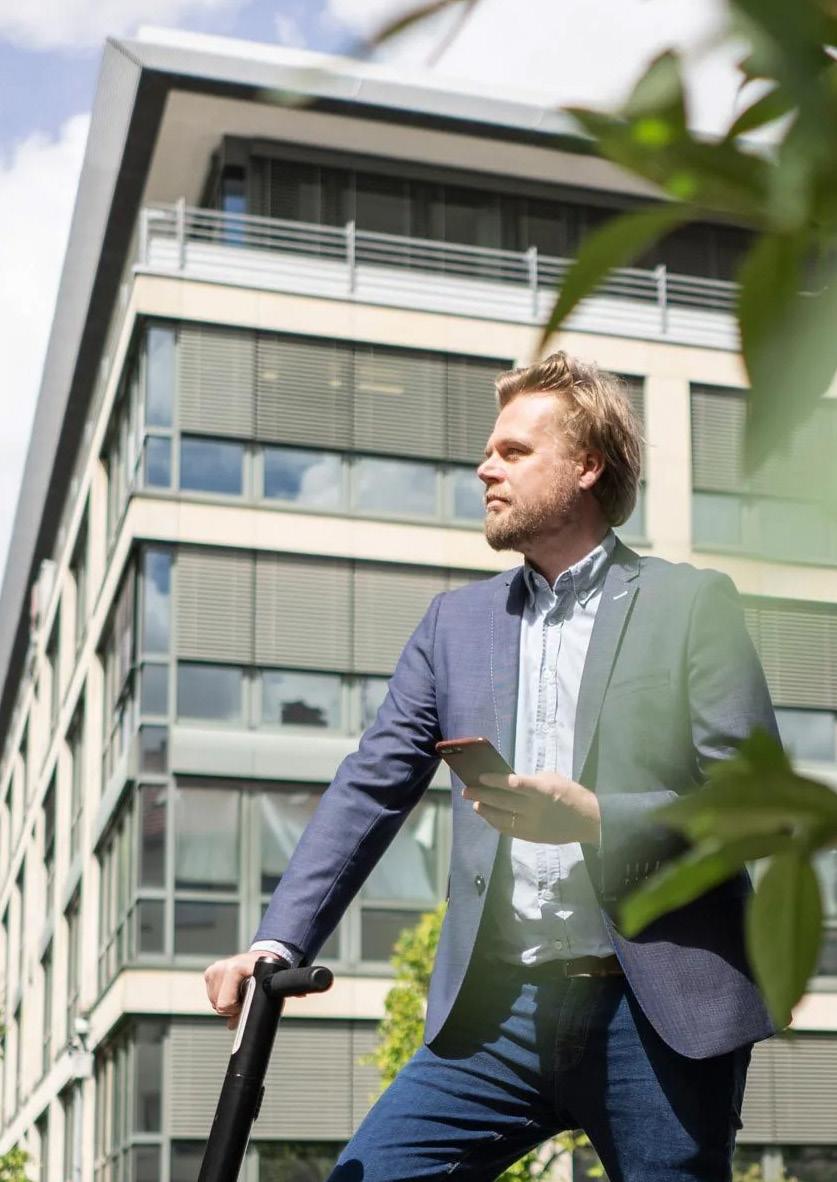

key topics that require cross-sector and multilateral collaboration. These events will dive deep into lesser-discussed issues surrounding specific topics that go beyond net-zero and carbon-mitigation strategies. “Biodiversity and community engagement around water basins is one of those topics. Another topic that we’re exploring more will be decarbonisation of UK homes.”
It is all go at Capgemini Invent, then – but Holm believes that it’s going to take every


business to put sustainable structure in place. “I really do worry that we’re not ready for the changes global warming will bring,” says Holm. “There’s so much that we have to change – not only about how businesses are run, but also how we live personally –and I think we’re currently unprepared for those changes.”
That’s why one of Holm’s key objectives is the focus on adaptation strategies. “We want to help our clients to see sustainability as an opportunity to build long-term value and a source of competitive advantage, not just a compliance requirement. This means shifting the focus from risk-avoidance to promoting justice and regeneration.”
Practically, this means supporting clients with an investment roadmap, with causality linked to their Capex and Opex expenditures, helping them understand the secondary and tertiary impacts of their investments over time, prompting them to take a long view. This will allow for customers to reduce impact, improve social wellbeing, and be more prepared for some of these changes.
“As a society, we've been too focused on resiliency,” says Holm. “Now, we need to start to shift towards adaptation, because even if we were to reach net zero tomorrow, already-existing climate issues and their effects wouldn’t change. We don't know for sure what temperature we'll land on yet.”
In the face of irreversible climate changes Holm believes that the industry needs to prepare for more change, mitigate any further climate impacts, and advise companies on their next steps – the latter of which function as Holm’s next steps for Capgemini Invent.

Digital transformation is an inevitability for energy companies not wanting to be left in the dust of technological irrelevance –how is industry-heavyweight Thermo Fisher Scientific embracing the challenge?
WRITTEN BY: MARIAM AHMAD /TAREQ W. ALNAJJARn a world becoming more digital by the minute, it comes as no surprise that energy providers are beginning to rethink and revamp old operations to remain relevant and competitive in an everevolving business landscape.
Enterprise digital transformation involves the total integration of digital technologies across an entire business to make processes more efficient, scalable and accessible. This sort of digital disruption means that as the evolution of technology rages on, businesses are having to keep pace.
With annual revenue of over $40bn and a market cap of over $200bn, Thermo Fisher Scientific provides its extensive portfolio of products, services, support and digital capabilities to aid energy companies in their digital transformation journey.
Global Strategic Account Executive for Energy, Tareq W. Alnajjar, tells us more.
“First, it’s important to realise that digital transformation in the energy sector is no longer an innovative vision but a strategic imperative. Thermo Fisher Scientific has leveraged its 35 years of informatics experience to support the sector with transformative lab informatics software, lab automation solutions, digital services, and digital commerce solutions.
We have already supported many customers across different segments of the energy space to advance on their digital transformation journey. Take the battery sector for example, companies typically look to us for a Laboratory Information Management System (LIMS) designed to comprehensively manage samples and streamline pre-production and in-process







A modern network must be able to respond easily, quickly and flexibly to the growing needs of today’s digital business. Must provide visibility & control of applications, users and devices on and off the network and Intelligently direct traffic across the WAN. Be scalable and automate the process to provide new innovative services. Support IoT devices and utilize state-of-the-art technologies such as real-time analytics, ML and AI. And all these must be provided with maximum security and minimum cost.
This is the power that brings the integration of two cloud managed platforms, Cisco Meraki and Cisco Umbrella. This integration is binding together the best of breed in cloud-managed networking and Security.




sampling, all to improve efficiency and traceability throughout manufacture. For this, we recommend our Thermo Scientific™ SampleManager™ LIMS software, which integrates seamlessly with Manufacturing Execution Systems (MES), allowing battery manufacturers to log samples automatically at specific points and assign appropriate tests. This upstreamthrough-downstream data flow delivers comprehensive sample management and full traceability, and more streamlined, efficient manufacturing operations.
Moreover, we have developed The Battery Solution for Thermo Scientific™ SampleManager LIMS, pre-configured to further support battery manufacturers. The Battery Solution for SampleManager LIMS provides the key capabilities to drive reliable and repeatable QA testing, with software that also enables customers to continually improve battery production. Manufacturers can therefore significantly reduce scrap rate, enhance traceability, and improve product quality for longer-life – and ultimately more sustainable – battery products.
Similarly, in the oil and gas sector, SampleManager LIMS software helps customers to control their processes with rigorous testing and real-time monitoring, optimise performance by connecting

“For a successful, fully adopted solution, companies need to incorporate comprehensive change management into their transformation plan”
critical instrumentation and data, and comply with regulations. It also helps them better monitor product quality, plant performance, and environmental conditions for maximum quality output.

Although companies across the energy sector recognise the importance of digital transformation, it can be taxing. Digital transformation requires careful planning and consideration and is rarely linear. From our vast experience, we see several key challenges on the path to digital transformation.

“Digital technology in all its forms is dramatically disrupting how laboratorians do science as well as how companies in the energy space do business”
TAREQ W. ALNAJJAR GLOBAL STRATEGIC ACCOUNT EXECUTIVE, THERMO FISHER SCIENTIFIC
First is selecting the right partner to steer and guide the transformation journey; an ill-equipped, inexperienced partner could see you erasing the benefits of your transformation efforts, leaving you with an approach that threatens current and future productivity, performance, and technology adoption.

Another challenge is business resilience: how well can an organisation adapt to a change of existing systems and operations, such as implementing a LIMS? Such resilience can vary widely across companies. Then there is the challenge of stakeholder management, including maintaining comprehensive and transparent
communications with those who have the most impact on or are impacted by a project. But effective stakeholder management is no easy feat. For example, with one of Thermo Fisher’s recent customers – a large governmental organisation – this involved navigating an administrative, multi-layered, decentralised organisational structure to ensure the right stakeholders were involved throughout the process.
For a successful, fully adopted solution, companies need to incorporate comprehensive change management into their transformation plan. We know, for instance, that successful transformations are aided by digitally-driven leadership in a customer’s organisation – knowledgeable people willing to evangelise within their company to overcome a reluctance to change. We also know that people are resistant to change when it feels forced, so it’s important to involve scientists early in digitisation projects, as this helps to create a pull from the scientists rather than a push from management. Finally, any topdown change must be complemented by bottom-up pressure – people who are subject to workplace or process changes really need to understand the value of and be bought into that change, too.
The last challenge concerns customer expectation, namely overcoming inaccurate preconceptions about digital capabilities. Customers often come to us, for instance, thinking their MES alone is enough to track and manage their data and assure the quality of their end product, largely unaware of the transformative value a LIMS can bring.
In South America, Thermo Fisher Scientific is working with two customers in clean energy, one of which is a leading natural gas and
hydrogen fuel solutions provider. Here, we implemented and updated their LIMS system to our latest version of SampleManager software and deployed it using a Thermo Fisher Scientific-managed infrastructure in the cloud. This is enabling the company to expand the scope of the systems within their laboratories and to ensure the quality and integration of data and systems throughout the organisation. As a result, they have vastly reduced workflow process challenges and increased production efficiency.
Shaping the future of digital transformation for the energy sector Digital technology in all its forms is dramatically disrupting how laboratorians do science as well as how companies in the energy space do business. We’re already seeing — and will continue to see — several digital-driven changes across the sector. One of the most important is the elimination of data silos. By unlocking isolated data and improving access to that data, companies get faster, better-informed decision-making.
Beyond data, digitalisation is also enabling people to better work together across internal and external networks in a seamless, collaborative manner. Armed with these newly integrated systems, companies can then unlock digitally automated lab processes to reduce manual work and free up capacity. The benefits of this are two-fold: for those in the lab, reducing mundane tasks means a more rewarding and engaging experience, and for the lab at large, it means greater productivity. Despite the benefits of digital transformation, though, many in the energy sector are not willing to transform and embrace the advantages of digital technology in all areas of their operation. Such organisations may find it harder to deliver value and compete in the future.”



Barely a decade into the popularisation of electric vehicles, Faraday Future is launching the first ultra-tech luxury electric vehicle: meet the FF 91


Prashant Gulati is the esteemed Vice President of Strategy at Faraday Future. Now in his seventh year with the company, he handles the entirety of its strategic roadmap, which includes overseeing the business plan, mobility initiatives, manufacturing strategy, and directing fundraising efforts.
Fundraising is a key part of Gulati’s role: “My proudest professional achievement has been co-leading the public offering, which helped the company raise more than $1bn through a listing on NASDAQ,” he says.
With over 20 years of success in the technology and automotive industries, Gulati is an accomplished executive with a track record of scaling businesses. He has successfully led a public offering and held leadership roles to drive growth and expansion at several companies globally. In recognition of his industry contributions, Gulati was selected for the coveted Business Insider list of EV Industry Power Players.
Gulati holds a bachelor's degree in computer science and an MBA from the Indian School of Business.
Having grown up in India, Gulati has always had a deep affinity for the environment. This draw of environmental stewardship was heightened when Gulati and his wife were expecting their first child. “I had a sense of urgency to contribute to technology that could help slow climate change and create a better world for our children to grow up in,” he explained.
“I explored numerous fields, including renewable energy, smart grids and energy storage, before focusing on EVs and finding



Faraday Future. I immediately clicked with the company as it had such a bold vision and fit the environmentally-focused technological approach I was seeking. My journey into the auto industry has been quite unusual – almost accidental.”

Faraday Future: driving the EV industry
“Climate change is the defining challenge of our time, and transportation is one of the largest contributors to it,” says Gulati. “At the same time, the world cannot slow down. We need more growth, more productivity, more time to commit to our passions. So, at Faraday Future, we've been working on the intersection of these problems - of clean mobility and climate change on one

“We were founded with the mission to help people live, move, and breathe more freely – and that's one of the things that drives a lot of us”
PRASHANT GULATI VICE PRESIDENT OF STRATEGY, FARADAY FUTURE
hand, and helping people lead productive, connected lives on the other.”
Faraday Future has taken the first step towards achieving that mission by building the FF 91, which Gulati believes is the most connected, comfortable, and technologically advanced electric car in the world. The company achieved start of production of the FF 91 in California and plans to sell it through a direct sales model in its dual home bases of the US and China.
“The vision of the company is much more than building and selling electric cars, though,” Gulati tells us. “We want to engage our users, build a community, and offer internet and AI services throughout the vehicle lifecycle.”

TITLE: VICE PRESIDENT OF STRATEGY
INDUSTRY: MOTOR VEHICLE MANUFACTURING
LOCATION: UNITED STATES
Prashant Gulati is the esteemed Vice President of Strategy at Faraday Future. Now in his seventh year with the company, he handles the entirety of its strategic roadmap, which includes overseeing the business plan, mobility initiatives, manufacturing strategy, and directing fundraising efforts.
With over 20 years of success in the technology and automotive industries, Gulati is an accomplished executive with a track record of scaling businesses. He has successfully led a public offering and held leadership roles to drive growth and expansion at several companies globally. In recognition of his industry contributions, Gulati was selected for the coveted Business Insider list of EV Industry Power Players.
Gulati holds a bachelor's degree in computer science and an MBA from the Indian School of Business.

WE DESIGN. WE ENGINEER. WE MANUFACTURE.
Our advanced electrical and lighting, battery storage, and thermal management solutions are the key to turning your ideas into reality. Trust us to provide smart solutions for your global technology needs and deliver results beyond your expectations.
Contact us today and let’s bring your product vision to life together.

In an exclusive interview, Jason Murar, President and CEO of JVIS USA, discusses how JVIS is pioneering the EV industry while supporting Faraday Future
JVIS USA is a world-renowned manufacturing leader boasting unrivalled proficiency across both design and engineering. Blending state-of-the-art technologies with vertically-integrated processes, the company guides a concept from the initial sketch to the final product launch, and everything in between.

By prioritising innovation, JVIS has established itself as a leader in the continuous shift towards electric vehicles (EVs). It specialises in delivering technology and components uniquely optimised for EVs, continuously seeking out novel concepts, technologies, and procedures.
JVIS has also played a vital role in supporting Faraday Future (FF) to unveil their vehicles to the market. Jason Murar, President and CEO of JVIS USA, explains:
“We’ve assisted FF in almost every facet, from the initial product development – where we identified key product innovations for their consumers – all the way through to the actual testing and validation, in compliance with automotive standards for those components and the continuous supply of critical components used in their vehicles.

Armed with impressive electrical solutions, JVIS employs the latest technology, such as capacitive touch surfaces and smart panels.
Murar says: “In the EV market, you see a lot of change with smart panels, which are now highly integrated into both the exterior and interior of vehicles.”
JVIS is committed to leading the development of the EV industry, particularly as it plays a large part in the company’s growth. “Our customers see how we’re taking static panels and turning them into functional panels, giving expanded use of the vehicle,” Murar explains. “These components include sensors and software to increase the user’s experience, such as soft-close doors and ambient lighting.
“JVIS’s continued investment in innovation and growth will enable us to make significant contributions to this dynamic field. If you are looking to turn your product ideas into reality, contact us today to learn more about how JVIS technology can help.”

Faraday Future started from scratch, taking a “clean sheet approach” to building electric cars. Faraday Future’s technology innovations include its proprietary Variable Platform Architecture (VPA), propulsion system, and Internet, Autonomous Driving, and Intelligence (I.A.I.) systems. The company has approximately 660 patents across these areas.
“So far, the company has invested billions of dollars in creating industry-leading product and technology,” recounts Gulati. “Building cars is a capital-intensive business, and we've had our ups and downs.
“The way I would describe the ethos of the company is one of perseverance and tenacity; one of never, ever giving up in the service of our mission.”
The FF 91 has been designed as an all-ability car, possessing the handling of a sedan, the space, reliability, and comfort of an SUV, and the top-level performance and driving dynamics of a sports car.
“A lot of people liken it to a Rolls-Royce, with increased comfort, connectivity, and performance ” Gulati tells us – and the statistics certainly speak for themselves.
video conferencing, and watch movies or live sports without driver distraction”
“There's a lot that has gone into developing and thinking about the design, driving experience, and the overall user experience” says Gulati who is incredibly passionate about the vehicle.
“There is no electric car in our segment right now – competing with Rolls-Royce,
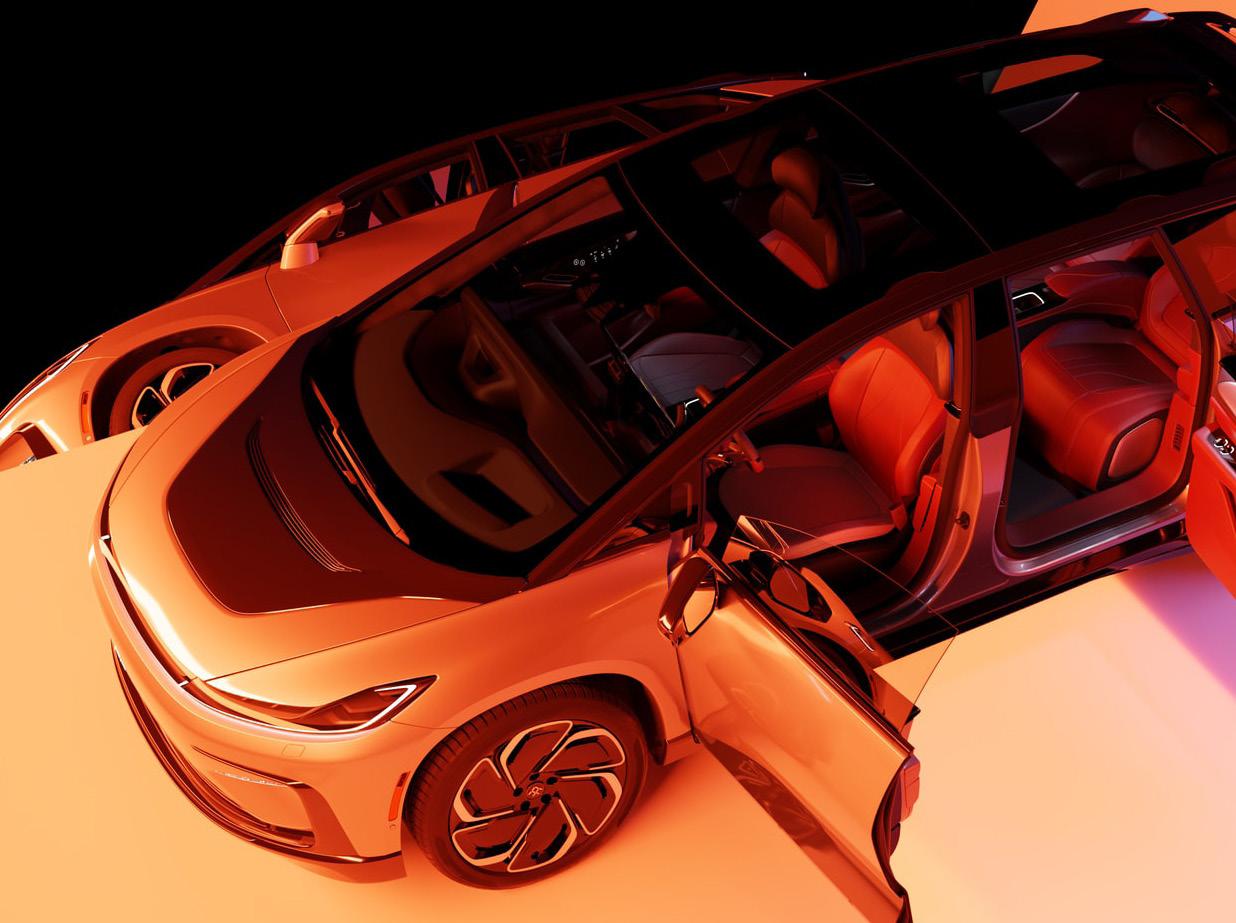
Bentley, Maybach – so we're quite excited about being the first EV of our kind, and we think it's going to redefine industry standards. The first ultra-tech luxury electric vehicle.”


“We are building what we believe is the most connected, most comfortable, most technologicallyadvanced electric car in the world: we call it the FF 91”
PRASHANT GULATI VICE PRESIDENT OF STRATEGY, FARADAY FUTURE

The technology under the bonnet Faraday Future describes the technology behind the FF 91 within three pillars:
1. Variable Platform Architecture
“Think of it like a Lego,” Gulati explains: “You can change the size of the platform and build different vehicles of different sizes for different purposes. You can put different motor and powertrain configurations. This skateboard-like platform approach enables us to build multiple vehicles on the same platform, reduce time to cost, time to market, and more.”
2. In-house Propulsion Technology
Faraday Future has developed a proprietary inverter design and propulsion system. The drive units are fully integrated with the inverter, and transmission and control unit to enable leading horsepower, efficiency, and acceleration.
3. Internet, Autonomous Driving, and Intelligence (I.A.I.)
“Our software, internet, and AI development is the most important of these pillars,” says Gulati. “That's where the company shines compared to all of our competition.” Faraday Future’s commitment to these technologies supports the user experience in the car, both practically and luxuriously, ensuring seamless user experience through different elements, one of which is advanced voice control to manage complex queries without driver or passenger distraction.



• 3 motors
• 1,050 horsepower
• 0 to 60 in 2.27 seconds
• Class leading EPA and CARB certified range of 381 miles
• Charge Time (20-80%): 25 min @ 200kW DC Fast Charge
• Overall length: 5,250mm/ 206.7in
• Up to three 5G modems and a newly developed operating system, allowing customers to use apps and stay fully connected
• Industry-leading 49 inches of rear seat legroom
• 60-degrees rear seat recline in NASA-inspired, zero-gravity seats
Faraday Future invested a lot in creating its own technology. “Some companies basically source parts and build a car, essentially becoming assemblers,” explains Gulati. “At Faraday Future, we've invested a lot of time and capital on creating our own technology.”
Faraday Future has strong partnerships with, and relies on, key suppliers to ensure the FF 91 is completed in a timely manner and with the high quality its users will demand. The company was affected to a lesser degree by supply chain issues during the pandemic because of planned low volumes at launch, and because many of the parts are created by suppliers uniquely
for the FF 91, and so we don't compete with others for those. Notwithstanding, the company has taken lessons from that period and gotten even more diligent about planning and ordering across the supply chain.
In terms of scale, Faraday Future employs 590 people across the US and China, and with its production plant in California the company will ultimately be capable of producing approximately 10,000 vehicles per year. The current manufacturing setup is asset light, and the supply chain is built with expansion in mind: if needed, the company has a contract manufacturing partner for this anticipated expansion, allowing early-stage flexibility.

“The company's DNA is completely global,” Gulati says: “We've designed and defined the product with an abundance of cutting-edge technology to cater to a global audience.”
The company is headquartered in Los Angeles, where much of the engineering and manufacturing takes place, but it also has roots in China – home to a Faraday Future engineering centre. The FF 91 will be initially launched in the US, followed by China, before being launched globally.
“Looking to the next 18 months, we are very focused on the FF 91 production, sales, and

“Climate change is the defining challenge of our time, and transportation is one of the largest contributors to it”
PRASHANT GULATI VICE PRESIDENT OF STRATEGY, FARADAY FUTURE
deliveries,” Gulati explains. “We're going to be scaling our operation, ramping up supply chain – that's the key focus area making the FF 91 successful.
Gulati believes that the value chain disruption we’re seeing now is going to continue, not only accelerating on the product and technology front, but on the sales side, too, as industry sales volumes increase.
“In the distribution model, quite a few OEMs have expressed a desire to sell directly to customers” Gulati explains.
“For the industry, this transition away from ICE (Internal Combustion Engine) vehicles is going to impact sales economics. Today, auto dealers mostly earn margins from selling auto parts and services, and financial services, and that's going to change. Maintenance and parts and services replacement in EVs is far less than ICE vehicles. So, we expect to see changes on the business side as well as on the product and technology side.”
Despite this value chain disruption and anticipated global economic slowdown, Gulati himself doesn’t forecast a slowdown for Faraday Future, citing research from McKinsey that shows the luxury vehicle market (vehicles $150,000 and above) is projected to grow significantly over the next 10 years.

Looking to the longer-term future, Faraday Future has ensured built-in capability to add further models to its Variable Platform Architecture.
“We have plans for our next model –we call it the FF 81 – which will share 60% commonality of parts with the FF 91,” Gulati says. “Although, of course, such future developments are dependent on a number of things, including fundraising.”
To promote long-term growth and success within the electric vehicle industry, Gulati says the focus is – and should remain –on batteries, reducing cost of materials, recycling, and developing new chemistries.
“Since 2010, the price of batteries has dropped significantly – until about 2019,” Gulati recounts. “In the last few years, battery and raw material prices have risen again because of supply chain disruptions, due to the pandemic.”
The second focus that Gulati expects of the industry is in EV infrastructure.
“We are seeing significant regulatory support to promote the transition to electric vehicles,” he says. “Governments are allocating a lot of capital and policy support towards education, charging infrastructure, and local sourcing of electric cars, so we anticipate that will continue.”
The future is on its way – and it looks electric.

“We need more growth, more productivity, and more time to commit to our passions”
PRASHANT GULATI VICE PRESIDENT OF STRATEGY, FARADAY FUTURE


 WRITTEN BY: MARIAM AHMAD
WRITTEN BY: MARIAM AHMAD
To address challenges faced by the power grid, industry leaders such as Siemens, Albireo Energy, and ABB are increasingly utilising smart grid and microgrid capabilities










nergy network modernisation is a critical factor facing the sector today. Easing reliance on central grids comes in the form of microgrids – local electrical grids that act as a single, controllable entity – and smart grids, which take form in the utilisation of digital communications technology to better manage networks. The transition away from centralised power plants towards decentralised or better distributed power plants is characterised by lower capital requirements and reduced dependence on fossil fuels.
The demand for electricity is expected to increase by approximately 40% between 2012 and 2030 due to population and economic growth.








To meet this demand, there is a shift towards decentralised power plants such as microgrids, which have lower capital requirements and reduced reliance on fossil fuels. Microgrids provide society with continuous, efficient, cheap and clean sources of energy. They are made up of distributed generators, energy storage systems and flexible loads, and when integrated with a smart grid, can provide a secure and stable electricity supply.
A major player within the realm of microgrids, Siemens believes that the


“Microgrids not only allow for carbon-reducing energy sources to be operated intelligently, but will also provide reliable and resilient sources of power when faced with extreme climate events and increased electrification efforts”
XIAOFAN WU HEAD OF RESEARCH GROUP, AUTONOMOUS SYSTEMS & CONTROL, SIEMENS


implementation of cleverly organised microgrids, hybrid power plants, and energy parks has the potential to significantly aid in the process of decarbonisation.
Recently, the company launched its microgrid at the Siemens Corporate Technology North American Headquarters, which serves not only as the primary energy source, but also as the foundation for pioneering research that investigates the multifaceted aspects of energy, such as sustainable development and resilience. Princeton Siemens’ microgrid demonstrates how innovative technology can be leveraged to achieve ambitious decarbonisation goals and generate substantial energy cost savings.
Notably, the microgrid serves as a tangible blueprint for an adaptable and efficient microgrid system that can be replicated in other locations worldwide, making it a vital tool in the ongoing effort to decarbonise the energy sector.

Speaking about the development, Head of Research Group, Autonomous Systems & Control at Siemens Xiaofan Wu said:
“It is Siemens’ belief that we not only hold ourselves accountable in the fight against climate change, but work with our customers to implement our technologies and solutions to help them along their own sustainability journey.
“Our Princeton, NJ campus – Siemens’ North American R&D hub – is home to the Siemens Princeton Island Grid, a microgrid system that is showcasing the combination of renewable energy solutions such as solar arrays with building management and energy management solutions. The result is an innovative, resilient, and cost-effective microgrid system that serves as a live testbed for Siemens’ customers and partners. The Princeton microgrid is a lighthouse project that acts as a blueprint for our customers across industries, as well as Siemens’ own facilities.
“We strive to develop and industrialise technologies with purpose – and we do this in collaboration with our global ecosystem of research partners.”

Wu believes that microgrid systems are one of the many solutions states will need to integrate into the overall energy mix, if they hope to reach the US’s decarbonisation targets.
“Microgrids not only allow for carbon-reducing energy sources to be operated intelligently, but will also provide reliable and resilient sources of power when aced with extreme climate events and increased electrification efforts. More efficient systems and renewable resources translate into fewer carbon emissions being released into the atmosphere.

“By combining field-tested energy management technologies across building, energy generation sources, and energy storage systems, Siemens is showcasing how these technologies can work together, and providing microgrid operators with a holistic view that will minimise energy spend while maximising comfort and security,” he concludes.



Grid resilience is an important factor for an evolving grid – continued investment in this space and the push towards grid modernisation will mitigate operational costs and save companies millions, if not billions.

The possibility of power outages caused by severe weather is amplified by other hazards that the grid faces, such as cyber assaults and worldwide pandemics. As a result, ensuring the resiliency of the grid has become a crucial subject.

ABB’s Global Digital Lead, Sherif El-Meshad, believes that the electrical grid is the backbone of modern society, stating: “We experience the importance of having a stable electricity supply every day, considering the current geopolitical conflicts, and, more recently, with concerns about energy security and supply following the war in Ukraine.
“We are also realising that the transition to clean energy makes us more vulnerable to instability. The implementation of technology to make the grid more resilient is now high on the agenda for utilities. This process can be further automated, and we are developing technology that will take the time and effort out of monitoring and scheduling usage, without compromising the quality of supply.”








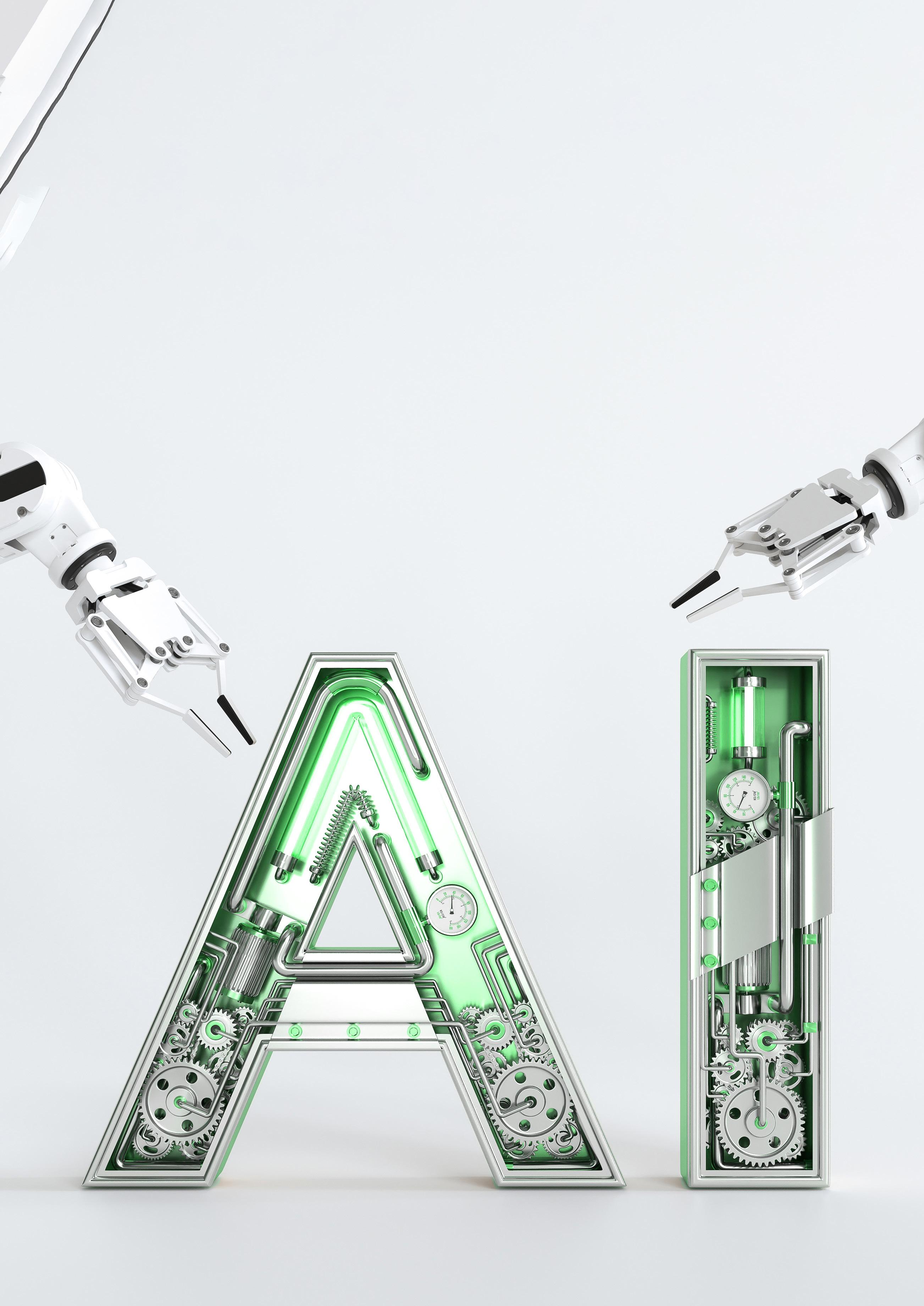

y this point, it’s a safe assumption that most people are at least somewhat aware of terms such as net zero and energy transition; endless conversations surrounding ’zero carbon 2030’ are seemingly pervasive in our climate change vernacular and corporate conversations.
As businesses look to scale processes, enabling them to be more cost-efficient and sustainable, the deployment of AI can prove invaluable. The convergence of AI and energy means that on the convoluted path towards achieving net zero, businesses are able to better manage operations. The integration of machine learning not only enhances productivity and releases resources for the transition towards sustainable energy, but it can also directly contribute to reducing the environmental impact through the ramping of renewables and integrating cloud computing, alongside improving the traceability of supply chains and increasing transparency in governance.

For all the denunciations that the oil-andgas industry receives, it nevertheless remains vital within the climate change discussion – and to energy security at large. Research from the International Data Corporation has found that the adoption of cloud computing in large-scale data centres has the potential to decrease carbon dioxide emissions by at least one billion metric tonnes or more.




By transitioning to cloud computing, oil and gas companies can not only save costs, but also scale more efficiently while simultaneously reducing their emissions.
The adoption of cloud computing to mitigate energy usage and increase the efficiency of the sector is something the data management solution company, NetApp, specialises in. The cloud computing giant helps energy companies manage big data to improve decision-making, accelerating
data analysis for 3D modelling, exploration, seismic processing, and rendering.
Matt Watts, Chief Technology Evangelist at NetApp, believes that prioritising sustainability when selecting a cloud provider means companies can make leaps in their green efforts and demonstrate their commitment to a more sustainable future.
“Ways in which the sector can reduce emissions are by centralising data storage, reducing their reliance on on-premises data centres, and leveraging real-time analytics via cloud solutions, all of which will enable the oil and gas companies to optimise their operations, reduce downtime, and make

MIGRATIONS TO THE PUBLIC CLOUD CAN REDUCE CO2 EMISSIONS BY 59M TONNES PER YEAR, WHICH EQUATES TO TAKING 22M CAR S OFF
data-driven decisions that improve their overall performance,” Watts states. Watts believes that embracing the cloud is done through the implementation of four steps:
The first step is to assess how all your IT resources – both on-premises and in the cloud (if you have some in the cloud) –are being used today. Using infrastructure analysis tools that give you visibility across the stack, on-premises, and in the cloud.

The second step is to analyse how your data is being used, including where it sits and how active it is. We’d advise using technology that helps your company understand what data you have and how it is being used. A whopping 68% of data is cold data; discover, classify, and identify that data so that it can be moved to more sustainable cloudbased storage.
The third step is to move appropriate data to the cloud through migration, backup, and tiering. Public cloud provider data centres may be more energy efficient and sustainable than traditional data centres. Using hybrid cloud-aware, secure, and efficient migration tools will allow you to migrate your workloads to the public cloud faster and more efficiently, which means you can take advantage of sustainability at scale.
The final step is to use energy-efficient storage for the data that remains in your data centre.

PRUDENCE HOFFMAN DIRECTOR, ENERGY STORAGE SOLUTIONS, HONEYWELL
“Technology such as ours enables resource owners to utilise every renewable energy resource at their disposal, they are contributing to the global energy transition”



The increased usage of solar energy and wind turbines, in addition to batteries and other dispersed renewable energy resources, has necessitated a new strategy for energy management. Older systems, which were created for unidirectional energy distribution and centralised power production, are no longer viable, incapable of managing bidirectional energy flows, and insufficient for evolving societal demands. To tackle this energy paradigm, VPPs (Virtual Power Plants) – which utilise machine learning and AI capabilities – prove indispensable.
Honeywell is a major player in the realm of VPPs, namely with its Experion Energy Control System, which uses advanced analytics and machine learning algorithms to analyse data and identify opportunities for efficiency improvements.
“Honeywell’s VPPs can optimise the aggregation of DERs across large areas by using digitalisation and deploying grid assets more efficiently. Technology such as ours enables resource owners to utilise every renewable energy resource at their disposal, they are contributing to the global energy transition,” says Honeywell’s Director of Energy Storage Solutions, Prudence Hoffman.


“Additionally, renewable sources such as solar are becoming more popular, particularly due to increasing company, local, and global sustainability goals. Through the remote management functionality within the Experion Control System, users have autonomous control to help them choose when they buy and deploy energy reserves regardless of the weather conditions.”

Next-gen technologies for a green future Technological innovation has total potential to transform how the world produces and consumes energy. Developing and integrating the next generation of AI-fuelled technology is key to the future of environmental sustainability. For energy giant Schneider Electric, this takes the form of what the company calls ’electrification’ by leveraging energy with automation and an integrated supply chain. Together, the company believes that they can reduce waste at every step in industrial processes by up to 20% or digitally connect organisational silos, freeing up innovations from the shop floor to management levels.
“One such digital technology that embraces an open automation architecture is Schneider Electric’s EcoStruxure™ Automation Expert, a software-centric industrial automation solution with IE61499 at its core. It takes an event-driven, decentralised, and open approach to automation engineering, decoupling hardware and software to make an industrial system agile, simple and future-proof,” notes Schneider Electric’s President of Process Automation, Nathalie Marcotte.
Marcotte believes that “Next-gen automation will facilitate IT/OT integration, therefore unleashing value creation on the shop floor, enabling advanced use cases that easily reach the next level of performance, efficiency, and resiliency. These software-centric technologies paired with new energy methods (like biofuels or carbon capture) that fundamentally address carbon emissions and other harmful greenhouse gases are magnifying step-change improvements to the industry.”

NATHALIE MARCOTTE PRESIDENT OF PROCESS AUTOMATION, SCHNEIDER ELECTRIC
“ Next-gen automation will facilitate IT/ OT integration and therefore unleash value creation for the shop floor, enabling advanced use cases that easily reach the next level of performance, efficiency and resiliency”
As we accelerate towards net zero in the energy transition, dependence on lithium-ion batteries grows extensively. In fact, the McKinsey Battery Insights team projects that the entire lithium-ion (Li-ion) battery chain, from mining through to recycling, could increase by over 30% annually from 2022 to 2030, when it would reach a value of more than $400bn and a market size of 4.7TWh.





Being a key component in EV batteries and within battery storage systems means that global supplies of Li-ion batteries are under strain. The world could face lithium shortages by 2025, the International Energy Agency (IEA) says, meaning that research and
investment into alternative solutions are pertinent if we are to slow down reliance on fossil fuels.
Mitigating shortages and easing the immense strain on supply chains could be alleviated by implementing a circular strategy: reusing and recycling lithium-ion batteries. By establishing a circular economy for lithium-ion batteries, businesses could enjoy lower manufacturing expenses, generate supplementary income sources, and receive tax advantages. This could additionally create employment opportunities through the emergence of new and expanded markets.
As demand for lithium-ion batteries grows exponentially, how do we ensure increased sustainability solutions along the battery value chain?








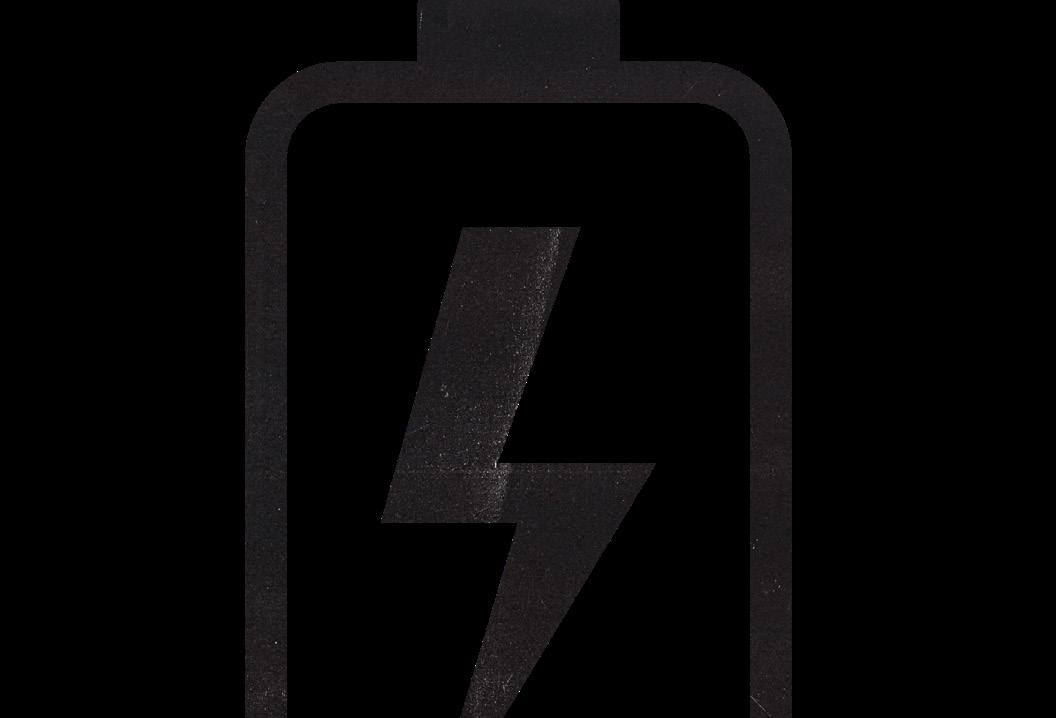



Implementing circular economy practices could also enhance market competitiveness by showcasing a business's dedication to eco-friendly initiatives, which could in turn build consumer trust and bolster its reputation. This approach could yield various environmental benefits, such as a reduction in waste, energy consumption, and greenhouse gas emissions, while also preserving raw materials.


As a result of these advantages, there may be increased federal, state, and local investment in circular economy initiatives in the United States, along with private investment in innovative products, services, and processes aimed at recovering and reusing materials.

An advocate for the circular economy is Clarion’s Chief Sustainability Officer, Adam Muellerweiss, who emphasises that the industry must utilise recycling to get the maximum life out of every energy storage device.



“There's only so many metals and materials on the periodic table that can be used for energy storage. We need them all and must be able to do them in a circular way. We need to be able to collect, manage, and reuse those resources.

“This is why we work with the Global Battery Alliance, formed with the World Economic Forum, to help foster this conversation globally, to really identify opportunities to use information, data, resources, and capabilities that we all have today in understanding the providence of materials, where they're going into what vehicle, ensuring chain of custody is managed, and to understand that, as that vehicle or that battery or that pack changes hands, second-life opportunities may be explored,” Muellerweiss states.
 RANDALL SELESKY CRO, ENERVENUE
RANDALL SELESKY CRO, ENERVENUE
“SODIUM CONTRAST WITH LI CHEMISTRIES BY LEVERAGING MORE SUSTAINABLE AND AVAILABLE MATERIALS WITH FAR FEWER ENVIRONMENTAL CONCERNS”


TITLE: CSO

COMPANY: CLARIOS



CSO at Clarios, a world leader in next-generation battery technologies. I am responsible for sustainability strategy, government and environmental affairs with a goal of optimizing sustainable product design within our business and growing end-of-life reuse and recycling through our strategic partnerships and expertise.
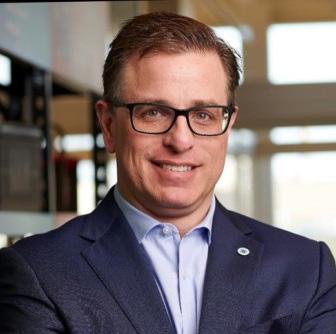
TITLE: CRO





COMPANY: ENERVENUE

25+ years of experience working in, and leading, a global sales organisation within a Fortune 500 Company & Start-ups. Mainly focused on entrepreneurial environments with focus on emerging technology and markets. With a career that spans industrial software & controls to battery storage, microgrids, and VPP's.

Sodium shares many chemical similarities with lithium. And, as it doesn’t have the same environmental impact as lithium, It’s a potential alternative.
As such, sodium-ion batteries could provide a viable solution. They don't rely on scarce resources, and production doesn’t necessitate rare lithium salts, either. Instead, they can be produced using common table salt.

EnerVenue – a company dedicated to developing nickel-hydrogen batteries – has revealed plans to construct a $1bn gigafactory, spanning 1mn/sqft, on a 73-acre property located in Shelby County, Kentucky. This facility will serve as a hub for the design, production, and testing of the company's Energy Storage Vessels, which utilise nickel-hydrogen technology.
EnerVenue’s CRO, Randall Selesky, believes alternative technologies have

emerged that are expected to perform better across stationary storage use cases and, critically, also take the load off of lithium-ion.


“Sodium-ion battery technology offers a glide path for power providers seeking to upgrade existing lithium-ion-based solutions directly. Sodium-ion batteries contrast with li-ion chemistries by leveraging more sustainable and available materials with far fewer environmental concerns. At the same time, improving sodium-ion batteries are on target to possibly surpass lithium-ion batteries in energy density, while already coming in at a low cost,” Selesky states.
“Sodium-ion battery production is such that existing lithium-ion manufacturing facilities can easily convert to producing sodium-ion batteries, enabling a frictionless shift as demand for this technology matures. For stationary energy storage use-cases, sodium-ion batteries should offer a compelling substitute for lithium-ion in the near future.”






Better supply chain management such as localisation, vertical supply chains, and strategic partnerships are integral in ensuring supply chain resilience. Due to the limited availability of regional raw materials, effective management of the upstream supply chain will continue to be crucial.
To enhance the security of supply and cost-reduction, a more integrated approach between metallurgy and chemistry at the production level could well be key. A positive by-product of such an approach would be the incidental sustainability improvements, geopolitical and ESG risk-reduction, and lower costs achieved by regionalising and colocating multiple steps in battery manufacturing.
“FOR US, OUR RAW MATERIALS COME FROM AROUND THE CORNER, NOT AROUND THE WORLD”
ADAM MUELLERWEISS CSO, CLARIOS
An integrated approach and vertical supply chains are important to Clarios, with Muellerweiss stating: “When we try to sell a battery, we want to recover a battery and get that back. It doesn't matter if we made the battery, it doesn't matter if it's exactly the same size that we're selling. It doesn't matter if there are multiple batteries that somebody wants to return back. We want it because that is the star of our supply chain.


“For us, our raw materials come from around the corner, not around the world. They come from an auto parts store, an auto dealer, or a repair shop where people are replacing batteries throughout their lifespan. By doing this, it provides us with a resilient, local, low-carbon, low-energy footprint source of raw materials that allows us to turn those right back into new batteries – new batteries that are now specifically designed for the EV revolution that we're supporting.”














Located in the Kurnool district, Andhra Pradesh, south India, with an operational capacity of 1GW (1000MW) of energy each year, a significant portion of India's gross installed electricity capacity of over 350GW, the solar park saves an estimated 1,892,160


Nearly all of Jinchuan in China's Gansu province is covered in solar power plants. A second cluster of projects is to the south, and the solar park occupies almost 90km2 of semi-desert to the west of the city. The solar park now has 15 plants, all of which have a combined capacity of just over 1GW. The

Located in Shanxi, China, Datong is a 3GW solar PV power project. Commissioned in 2016, the project cost $138m and was developed by China Power International Development and China Three Gorges. The project is currently owned by China Power International Development with a stake of 100%.
The plant will be able to produce 3.2bn kilowatt-hours of solar energy in 25 years and reduce CO2 emissions by 2.74m tonnes.



The world’s largest single-site power plant, Noor Abu Dhabi provides power to roughly 90,000 homes with 1.17GW. It has 3.2m solar panels and is 8sqkm in size. The plant generates approximately 1.2GW of electricity, reducing the reliance on natural gas for electricity generation and reducing the country’s carbon footprint by 1m metric tonnes per year – enough to eliminate 200,000 vehicles from the road.
Abu Dhabi National Energy Company owns 60% of the project with Marubeni Corporation and JinkoPower each holding 20%.


The Tengger Desert Solar Park currently powers around 600,000 homes with its 43km2 of solar panels providing a 1.51GW output.
The capacity of the project's first phase will be 1m kilowatts. When the base is fully operational, its yearly power result will be 5.78bn kilowatts, the equivalent to saving 1.92m tonnes of standard coal each year. This is significant for a country that relies heavily on coal for energy.
Costing $4bn, Benban Solar Park is Africa’s largest solar farm, with a colossal solar potential of 6.3kWh/m2 per day. This amounts to 41 solar power plants in total.
The 1.8GW project is managed by the New and Renewable Energy Authority (NREA), which is owned by the state. It includes a number of small solar power plants that are being built by different companies. The project is a part of the Egyptian government’s Sustainable Energy Strategy 2030.



UAE Spread over 13,000 acres, Pavagada Solar Park provides 2.05GW to Indian citizens. Costing $2bn, the solar park was developed by Karnataka Solar Power Development Corporation (KSPDCL), a joint venture between Karnataka Renewable Energy Development (KREDL) and Solar Energy Corporation of India Limited (SECI) that was formed in March 2015.
The desert nation of the UAE is home to a 76km solar park, the largest in the world, with a current capacity of 1.63GW. This is planning to grow to 5GW by 2030.


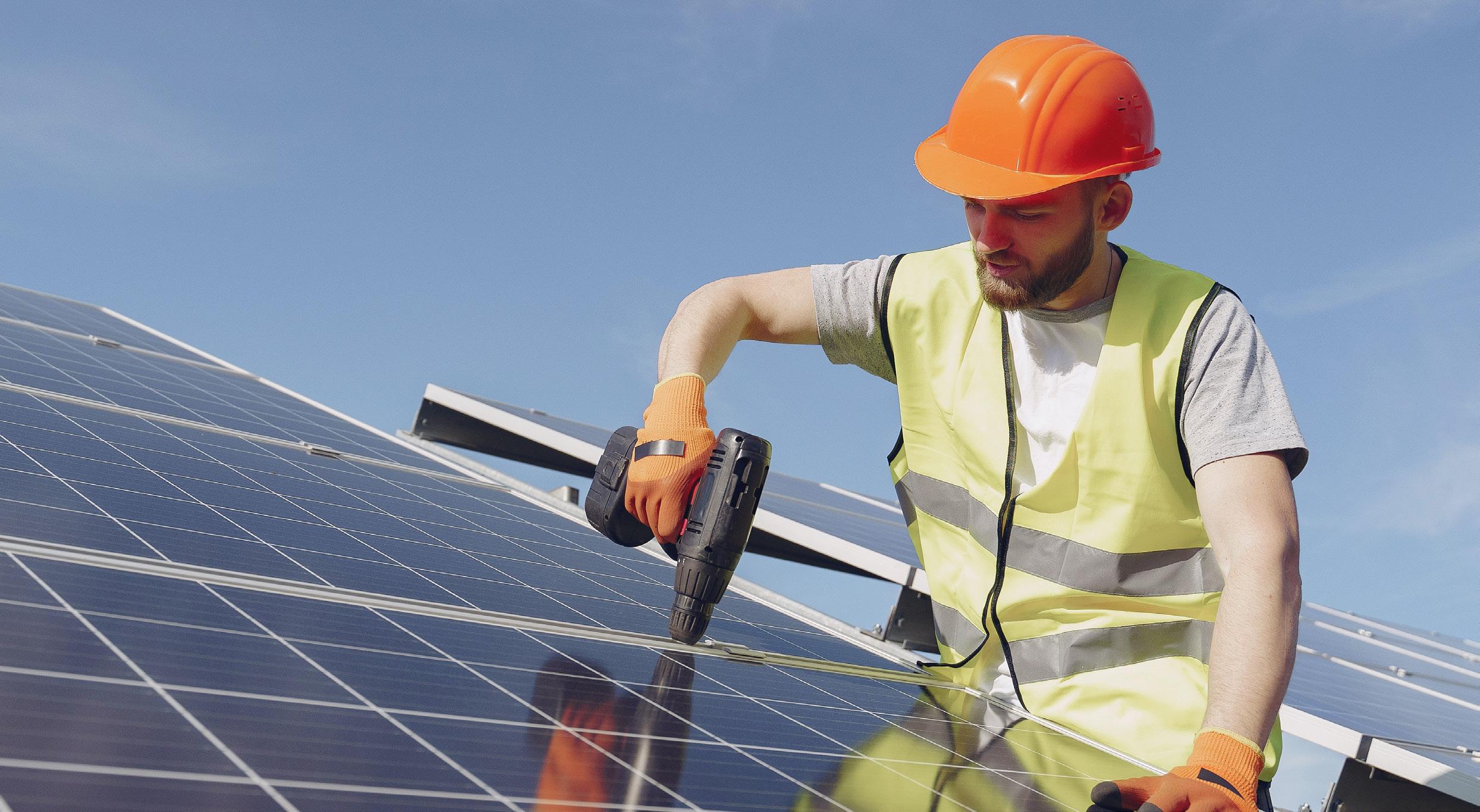
The solar park provides power to 270,000 homes, offsetting a total of 1.4m tonnes of carbon. Developed and managed by the Dubai Electricity & Water Authority, the solar park is one of Dubai’s key initiatives in the Dubai Clean Energy Strategy 2050 – to produce 75% of the city's energy requirements from clean sources by 2050.
Karnataka, the state in which this solar park is based, has the highest solar installed capacity among the Indian states followed by Rajasthan and Tamil Nadu.
Soaking up the sun in India’s Thar Desert is Bhadla Solar Park, consisting of 14,000 acres of colocated solar power plants, with a consistent generation of 2.25GW (Bhadla now totals about 2.7GW of capacity since recent additions).

The park benefits from nearperfect conditions, with the Rajasthan region receiving 5.72kWh/ m2 of solar irradiation each day on average. Additionally, the solar farm benefits greatly from 300 sunny days per year.
Bhadla, like some of the other large solar farms on this list, was ordered by a number of businesses to auction off specific amounts of solar capacity. For instance, the Solar Energy Corporation of India held an auction for 25MW capacity, and 27 businesses all made bids.















With an installed capacity of 2.8GW, the Golmud Solar Park in China’s Qinghai Province, houses 80 solar power plants in total – this is enough to power over one million houses.

Costing a total of $587.22mn, the project was developed by China Longyuan Power Group and is currently owned by SDIC Huajing Power Holdings, with a stake of 100%.



Construction of the Golmud Solar Park began in 2011 and was completed in 2019. The solar park
uses photovoltaic (PV) technology, with over 7.2m solar panels installed to generate electricity. The park is connected to the State Grid Corporation of China's power transmission network, which allows the electricity generated to be distributed across the country.


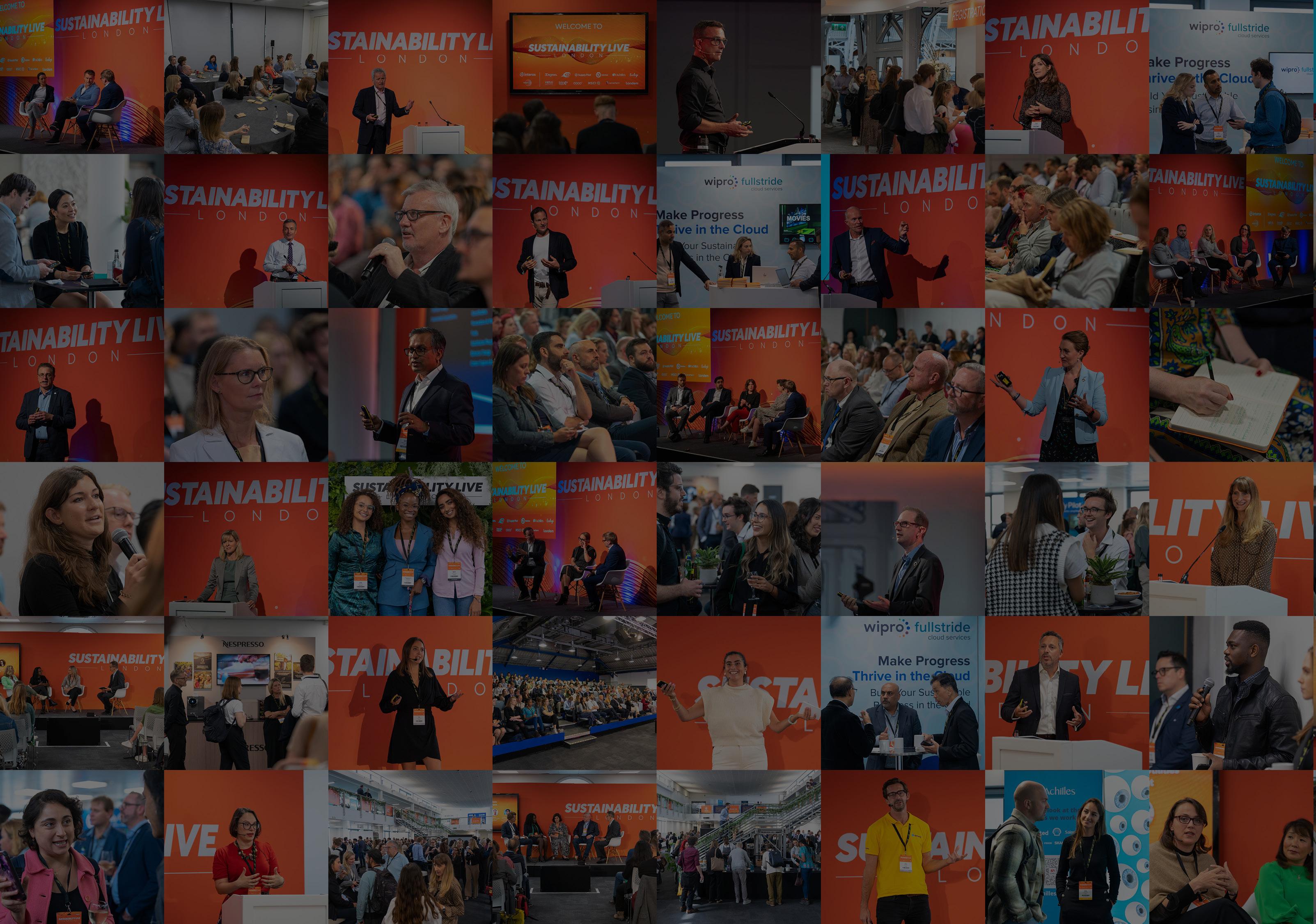
6 - 7 September 2023
Business Design Centre, London
SPONSORSHIPS GET YOUR PASS